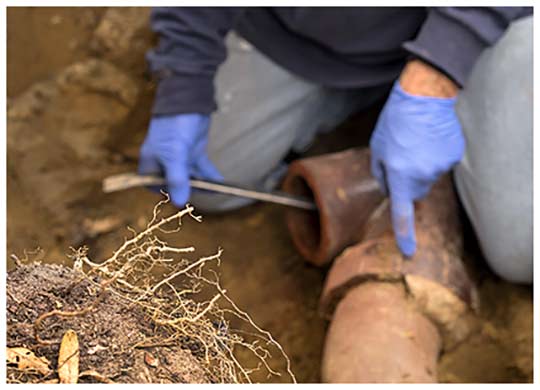
Most times, the sewer line in your property will work precisely as it was designed. But sometimes the sewer line is going to malfunction. That malfunction may be due to a blockage or clog in your sewer line, aging of the sewer pipes, movements in the soil around the pipes, or damaged by tree roots and rodents. These problems can cause your sewer line to break.
When a sewer line breaks, who is responsible for fixing the problem? Is it you or the city?
Given that the city treats the wastewater from your home, you may think the authorities are responsible for all sewer problems. But this is not always correct. The city and homeowners are jointly responsible for maintaining the sewer lines, says Advantage Realty Services. What are your responsibilities versus the city’s responsibilities?
Sewer line maintenance and repair: your responsibility
The sewer line between your house and the main sewer in the street consists of two parts: the upper sewer lateral and the lower sewer lateral.
- The upper sewer lateral is the pipe section closer to your home. It typically includes the length of the pipe from the cleanout to the sidewalk.
- The lower sewer lateral includes the section of pipe from the sidewalk to the main sewer.
Unless there is something in writing to the contrary, any part of the sewer system on your property is your responsibility. Also, damage to the city’s sewer line is your responsibility if it is caused by you. The only time you do not assume responsibility for private sewer lines is when it is shared with other homes. In that case, you may need to find out what the local ordinances say.
Here is a summary of your responsibilities are far as the sewer line in your home is concerned:
The upper sewer lateral
In most cases, you are only responsible for the line within your property’s boundaries if they collect wastewater from your home alone. This section, which is your private sewer line, usually consists of the upper sewer lateral, and problems with this line are your responsibility. But this is not where your responsibility ends.
The lower sewer lateral
Although this section of the sewer line often lies beyond the property line, some municipalities make it the homeowners’ responsibility. For instance, in the San Francisco Bay Area, cities such as Oakland make the lower lateral sewer the responsibility of homeowners. Check your local laws to know what applies to your location.
Damage to city property
Even if your responsibility is limited to the sewer line which runs from your property line to the house, you may also be responsible for fixing the main sewer line that belongs to the city. This can happen if the damage to your sewer line is deemed to have affected the city’s part of the sewer system. In such cases, you will be asked to pay for the cost of fixing the city’s property.
The easement
In certain states, homeowners are responsible for the easement in front of their property. If the easement is damaged while repairing your main sewer line, you will need to fix the damage. This is because the city allows you to run your private utility under the easement. Therefore, if your property damages the city’s property, you are expected to fix the city’s property.
If there is a problem in your sewer line and you are not quite sure if the issue is on your side or the city’s side of the line, it is best to contact the authorities. City officials can look at the problem to determine its cause and who is responsible for fixing it. It is also a good idea to contact the city if you think repairs to your private sewer lines will affect the city’s property.
Sewer line maintenance and repair: the city’s responsibility
The city is primarily responsible for the main sewer line and problems emanating from the main sewer line. Problems with the main sewer line often show up in the entire street; most homes on the street will be affected. But even if the problem involves just a few houses, your home, and a neighbor’s home, it is still the city’s responsibility to deal with the situation.
A common problem affecting city sewer lines is blockage of the system by fatbergs. If you see sewage in the street or neighbors complain about the same issues you are experiencing in your home, it is a good idea to report the problem to the city. If the problem is determined to be on the city’s side of the sewer line after inspecting the sewer system, they will fix it at no cost to you.

